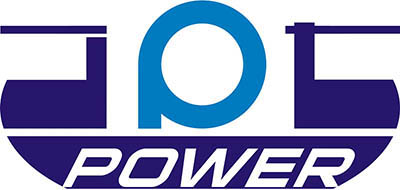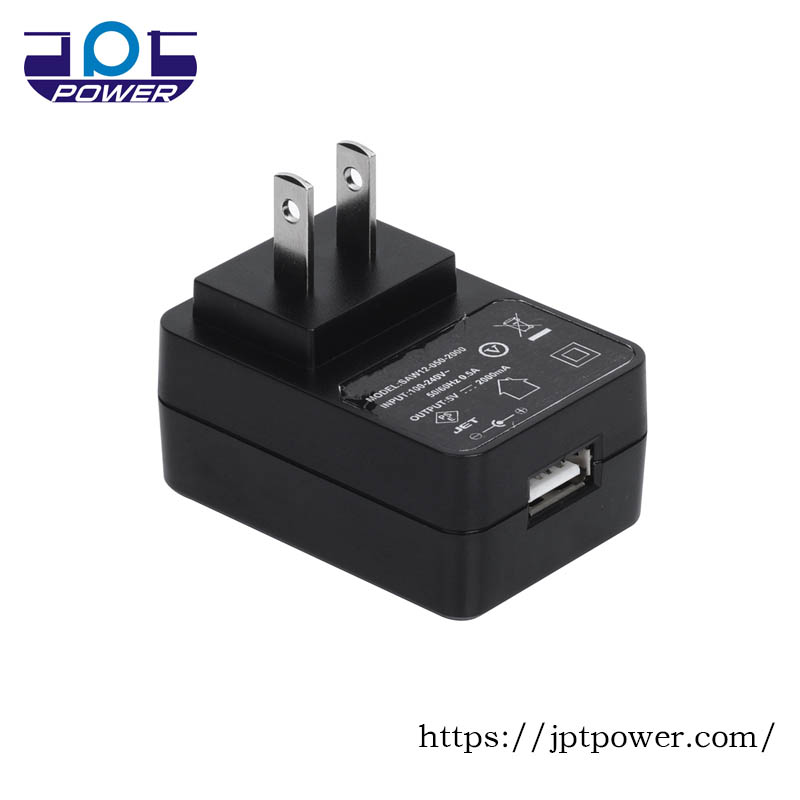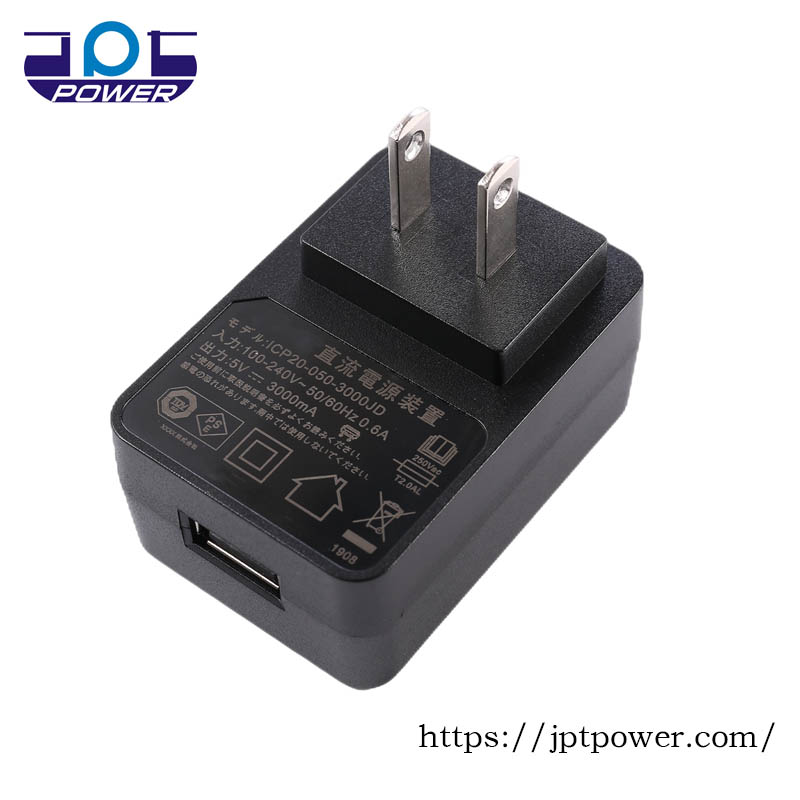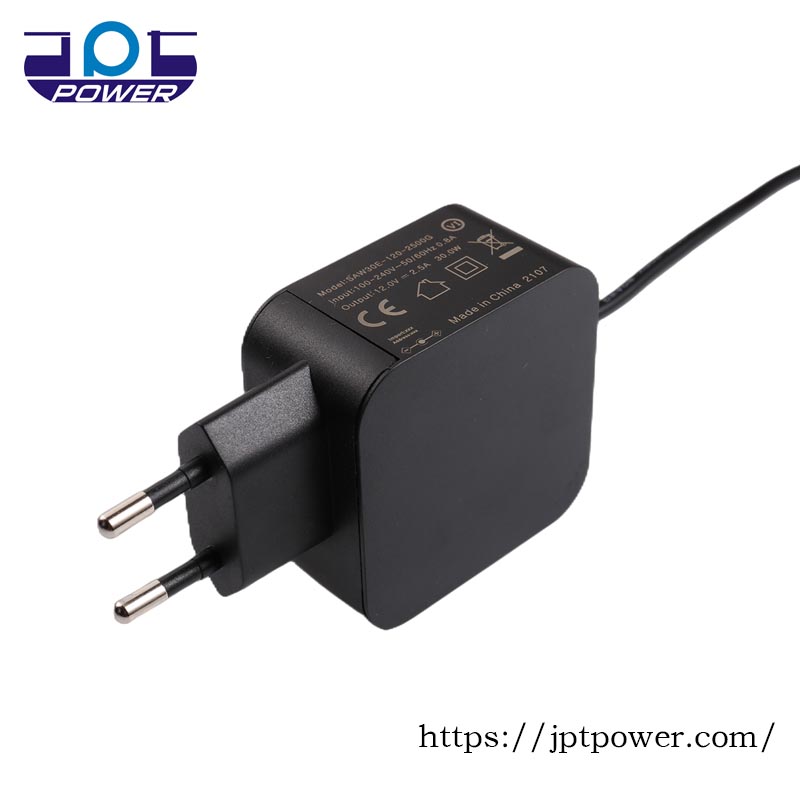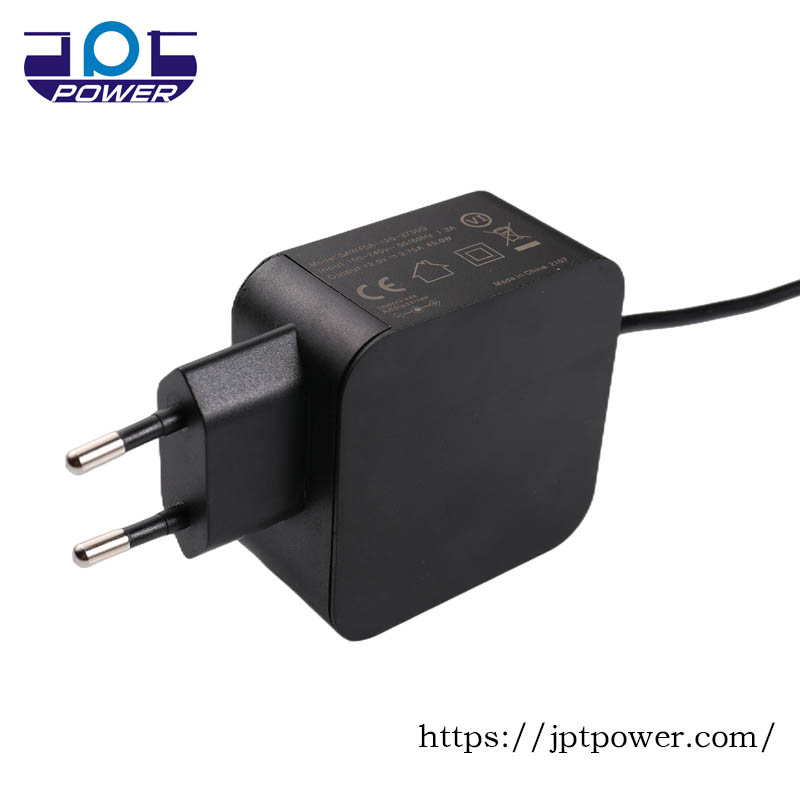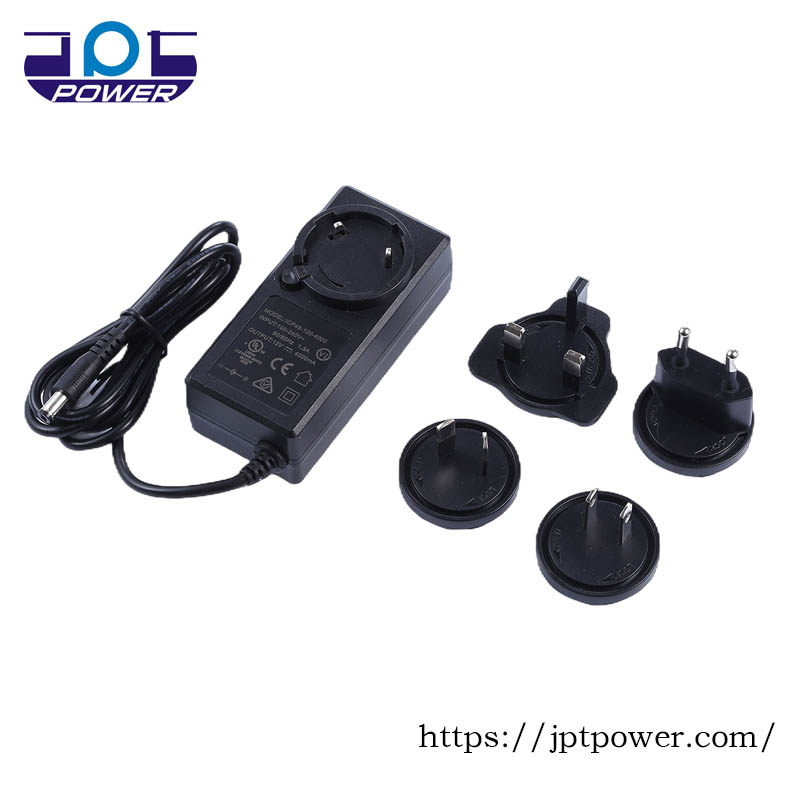Best Manufacturer Of USB Power Adapter
A USB power adapter is a type of power adapter that converts electricity into the power required by a USB interface, so that it can charge or power other devices across various devices.
USB power adapters typically consist of a plug, a converter and a cable. The plug is inserted into the power socket, the converter converts the electricity into the power required by the USB interface, and the cable is connected to the device that needs to be charged or powered.
USB power adapters are usually used for smartphones, tablets, laptops, digital cameras, audio devices and other devices. They are convenient for providing power to various devices, and they have universal availability, portability, and are one of the indispensable electronic devices in modern life.
As a leading manufacturer of power adapter in China, JPTPOWER provide 6-65W of output power and come in two types: wall plug USB adapter and interchangeable USB power adapter. JPTPOWER provides custom services if these products can’t meet your requirement.
Custom USB Power Adapters
- High-quality fire-resistant materials, with branded IC design solutions
- Output includes optional USB-A & USB-C ports
- Customization of branding logo and packaging available according to your requirements
- The minimum order quantity for wholesale is 500PCS
- 100% quality inspection is conducted before the products leave the factory

USB Power Adapter&Charger
These power adapters have obtained global safety certifications including UL, FCC, CE, GS, UKCA, SAA, RCM, PSE, PSB, BIS, and comply with multiple standards, such as LPS (Limited Power Source), IEC/EN 60950-1 (Information Technology Equipment), IEC/EN62368-1 (Information and Communication Technology Equipment), IEC/EN60335-1 (Small Household Appliances), IEC/EN61558-1 (Small Household Appliances), and UL1310 (General Products). These certifications are important measures to ensure electrical safety, mechanical stability, and environmental adaptability of the power adapters.
In addition, JPTpower’s USB Charger uses universal USB-A and Type-C interfaces, which are widely used in various electronic devices. The USB power ports are easy to use and can meet customers’ diverse needs.
Wall Plug USB Power Adapter
Interchangeable USB Power Adapter

USB Type A Port
The USB Type A port used on USB Power Adapters is a standard USB plug shape, usually rectangular with four metal points. The interface is a universal interface for connecting electronic devices, which can be connected to a variety of devices, such as computers, mobile phones, tablets, digital cameras, etc.
In A USB Power adapter, a USB Type A interface is usually used to transfer power. Power transmission usually uses two of these wires, red and black, with the red line representing the positive terminal and the black line representing the negative terminal.
| Pin Name | Description |
| VBUS | Power supply |
| D- | Negative data transfer |
| D+ | Positive data transfer |
| GND | Ground |
Pins
Perhaps you are not clear about the definition of USB Type A port. Our engineers have created the definition on the left to help you understand. In this connector, the VBUS and GND pins are used to transmit the power signal, while the D- and D+ pins are used to transmit the data signal. Since USB power adapters are mainly used to charge devices, only VBUS and GND pins are needed for power transmission.
In some cases, such as when using A USB-A charging cable to connect a computer or other USB device, the D- and D+ pins are also used to transfer data. However, in USB power adapters, these two pins are usually short-circuited to ensure that only the power signal is transmitted, allowing for a more efficient charging service.

USB PD
PD charger is a fast charging method using USB Power Delivery (USB PD) technology. USB PD is a higher power and more flexible energy transfer protocol on the USB-C connector. Its maximum power is up to 100W, making charging faster and more efficient.
Compared with traditional USB chargers, PD chargers can automatically adapt the appropriate charging power according to the different power required by the device, avoiding the problem of excessive or inefficient charging. PD charger can greatly shorten charging time and improve charging efficiency.
In addition, the PD charger supports two-way charging, which means that it can be used as a charger to charge other devices or as a power supply device to receive charges from other devices.
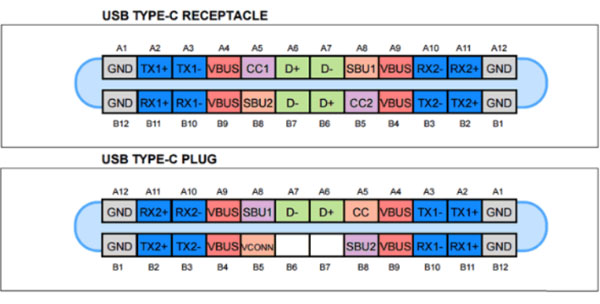
USB-C Interface in PD Chargers
The USB-C interface in PD chargers has various pins, including VBUS, GND, CC1/CC2, SBU1/SBU2, and D+/D-, with each serving a specific function. The CC1/CC2 pins are particularly important as they facilitate two-way communication for power negotiation and data transfer, enabling PD chargers to adjust power output according to the device’s needs.
This feature allows for faster, more efficient, and flexible charging. Other pins, such as VBUS, GND, SBU1/SBU2, and D+/D-, also play a role in two-way data transmission and connecting peripherals.
Why choose JPTpower's USB adapter?
JPTpower is a professional manufacturer of USB power adapters. Our products not only have rigorous quality inspection, but also passed the certification of many authorities, such as UL, FCC, CE, GS, UKCA, ROHS and so on.
We are committed to providing customers with high quality, efficient, reliable and safe USB power adapters, to help users anytime and anywhere to keep sufficient power, so that your electronic devices always maintain the best working condition. At the same time, our production process has been continuously optimized and improved to ensure that every link to achieve excellence, so that we can produce high quality products with the highest efficiency.
Whether at home, in the office or on the go, choose JPTpower’s USB power adapter to meet your charging needs. By becoming a JPTpower customer, you will not only receive reliable products, but also enjoy our excellent after-sales service and product warranty policy.



Frequently Asked Questions?
A USB power adapter is an accessory that allows you to charge electronic devices through a USB port. It plugs into a wall outlet and provides a USB port for charging smartphones, tablets, smartwatches, or other devices that can be charged via USB. The power adapter converts AC power from the wall outlet to DC power, which can be safely used to charge USB-powered devices. Many USB power adapters are compact and portable, making them convenient for travel or on-the-go charging.
A USB power adapter getting warm while charging is normal. However, if it becomes too hot to touch, it may indicate a problem with the adapter or the device being charged.
Using an adapter with a higher wattage than required by the electronic device can cause it to overheat. It is recommended to use the adapter that came with the device or one with similar specifications.
If you notice overheating, unplug the adapter from the wall immediately and stop using it. Contact the manufacturer for further assistance or consider purchasing a new adapter.
USB Power adapter cable refers to the cable or data cable that connects the adapter to the electronic device. Using this wire, the adapter converts alternating current to direct current and provides the required charging current to the electronic device. This cable usually has a USB port and is compatible with most electronic devices.
“USB to power adapter” is a device that converts a USB interface into a power adapter that can be used for other electronic devices. Typically, such adapters use USB ports to provide power and connect to other devices through different power sources to provide the required power. For example, users can use USB to power adapter to connect a smartphone or tablet charger to a portable speaker or other device that requires a power adapter.
“USB power adapter specifications refer to the technical specifications and features of a USB power adapter. This includes information such as the adapter’s output power, voltage, current, and connection interface. These specifications and features are typically detailed in the adapter’s product manual, label, or packaging box to help users select the correct adapter for their device.
The specifications and features of USB power adapters vary by manufacturer and model, so users should carefully review the product description and specifications to determine if the adapter is compatible with their device and meets their energy requirements.
For example, when purchasing a phone charger, it may be necessary to consider the adapter specifications to ensure compatibility with the phone charging port and provide sufficient power output to support fast charging features like fast charging mode.
In summary, the specifications and features of a USB power adapter are very important as they determine how the adapter will provide power to the device. Therefore, it is essential to read and understand the specification information on the adapter’s product manual and label to obtain the best charging experience.”
In general, the size of USB power adapters varies by manufacturer and model. With the current development of science and technology also for the convenience of users, USB power adapter will be designed relatively small. However, the size of the adapter still depends on its intended use and the manufacturer’s design specifications.
USB power adapters can have different output voltages depending on the device they are designed to power. For example, a USB power adapter for a smartphone may have an output voltage of 5V, while an adapter for a laptop may have an output voltage of 20V or higher.
It is important to ensure that the USB power adapter has the correct output voltage to match the device’s input voltage requirements. Using the wrong voltage can damage the device and potentially cause harm to the user.
USB power adapters involve complex technical details and safety considerations that require professional engineering expertise to design and manufacture. Attempting to create a USB power adapter circuit diagram without the necessary knowledge and experience can be unsafe and may result in damage to the device or injury to the user.
It is important to rely on reputable manufacturers and their product documentation when selecting and using USB power adapters. The product documentation typically includes information on the adapter’s specifications, safety features, and compliance with relevant safety standards and regulations.
If you have any questions or concerns about USB power adapters, it is recommended to contact the manufacturer’s customer support team for assistance.
USB power adapters are commonly used to provide power to a variety of devices, such as smartphones, tablets, laptops, and other USB charging devices. It consists of two parts: the adapter body and the connecting cable. The adapter body typically has one or more USB ports and connects the adapter to a power supply or other device through a connection cable.
USB power adapters usually include some important specifications such as output voltage, output current, power, and compatibility. The user should choose the appropriate adapter based on the requirements of the device to ensure that it provides adequate power and is compatible with the device.
USB Power Delivery (USB PD) is a standard that enables devices to support higher power output and enable fast charging and faster data transfer speeds. Many modern devices and adapters support the USB PD standard.
Some USB power adapters have multiple USB ports so that you can power multiple devices at the same time. These adapters typically have a high power output to ensure sufficient power for each device.
The working principle of USB power adapters is to convert the power from the power supply into the voltage and current that best suit the desired device. When you plug a USB power adapter into a power outlet and connect it to one or more devices, the adapter extracts power from the power supply and converts it to the voltage and current that meet the USB interface standards. The internal circuitry of the adapter can adjust the voltage to 5 volts (or other voltages) to match the requirements of the device, and also regulate the current to ensure that the device gets enough charging power or operating power. The adapter then transfers power to the USB port of the desired device, allowing the device to charge, transfer data, and perform other operations.
If a device uses a USB adapter that requires more power, you can use a higher-power USB power adapter to power the device to increase the power output of the power adapter, which is the output voltage and current. This can meet the equipment needs more power, to ensure that it works properly.
The power of wireless chargers currently on the market varies by model, manufacturer, and the fast charge protocol they support. Typically, wireless chargers are between 5 watts (W) and 15 watts. Some high-end wireless chargers may support higher power, up to 30 watts or more, for fast charging.
Note that the actual power output of a wireless charger may differ from its nominal power, depending on factors such as electrical matching and transmission efficiency between the charger and the charging device.
It is not recommended for most people to make their own USB power adapter, as this can be difficult and dangerous. This is why it’s better to buy a pre-made and certified adapter, which is safer and more convenient. However, if you still want to make your own adapter, be aware that it requires a certain level of electronic knowledge and skills to ensure its performance and safety. Otherwise, there is a potential risk of hazards such as electrical shock.
USB power adapters must comply with the safety standards IEC/UL 60950-1 and IEC/UL 62368-1. These safety standards govern the design, construction, and testing of information technology equipment, audio/video equipment, and household appliances.
IEC/UL 60950-1 is a safety standard for information technology equipment, including USB power adapters, that specifies requirements for protection against electric shock, energy hazards, and fire hazards. This standard applies to devices that are rated to provide power between 100V AC and 240V AC at 50Hz to 60Hz.
IEC/UL 62368-1 is a new safety standard that replaces previous standards like IEC 60065 and IEC 60950-1. It is a hazard-based standard that identifies potential risks associated with electronic devices and ensures that products are designed and tested to mitigate those risks. This standard applies to a wide range of electronic devices, including USB power adapters.
A USB power adapter can be used for charging. A USB power adapter is a power conversion device capable of converting alternating current (AC) to direct current (DC) for charging purposes. All users need to do is plug the charging cable into the USB port of the power adapter and then plug the adapter into a power outlet or USB port on their computer to use it. Common USB power adapters typically range from 5W to 20W and can be used to charge various types of devices, such as smartphones, tablets, headphones, and more.
Power adapters and chargers differ in function and usage scenarios. A power adapter is a device that can convert AC input to DC output and is suitable for small portable electronic devices and appliances. The power adapter is composed of a shell, transformer and other components and is widely used in security cameras, set-top boxes, routers and other devices. On the other hand, a charger is specifically designed to charge batteries or electronic devices, and usually contains one or more charging sockets with specific voltage and current limits. Some chargers on the market now also have the function of a power adapter. In summary, although there is some overlap between power adapters and chargers, they still have differences in product design, function, and usage scenarios.
USB power adapters can be applied to many devices, including smartphones, tablets, portable chargers, digital cameras, MP3 players, e-readers, etc., to provide stable power supply through USB ports. Generally speaking, different devices require different voltages and currents, so the USB power adapter will output corresponding voltage and current according to the specific requirements of the device to ensure normal charging. In addition, USB power adapters can also be used with data cables to facilitate power supply and data transmission for users. In summary, any electronic product with a USB port can be powered or charged through a USB power adapter.
A single-port USB power adapter has only one USB output port, which can provide power supply or charging function for one device. On the other hand, a dual-port USB power adapter has two USB output ports, which can provide power supply or charging function for two devices simultaneously. Therefore, the dual-port USB power adapter has higher efficiency and flexibility, and can meet the needs of charging multiple devices at the same time. However, when using the dual-port USB power adapter, it is necessary to pay attention to whether the total power exceeds its rated power in order to avoid overloading and damaging the devices.
To convert the AC plug to USB, you need an AC-USB adapter or a USB power adapter. These adapters typically have a standard AC plug on one end that you can connect to an electrical outlet, and one or more USB ports on the other end for charging or powering USB devices.
You can buy AC to USB adapters from various electronics stores, online retailers, and even certain department stores. When choosing an adapter, be sure to check the power output and compatibility with USB devices. It’s also important to choose a reputable brand and make sure the adapter meets safety standards to prevent any potential damage or danger.
Once you have the AC-to-USB adapter, simply plug it into an available power outlet and connect your USB device with the appropriate USB cable. The USB device will then receive power or be able to charge from AC power.
Recommend Readings About USB Power Adapter
- 5V2A USB power adapter VS. PD20W USB charger Which is Better
- What is the Difference Between UL Listed and UL Recognized in the power adapter
- What are the tests required for a qualified USB power adapter
- Some knowledge about USB Type-C interface
- PD Fast charge protocol in USB charger
- How do I select a manufacturer for a wholesale USB power adapter
- How do I customize a USB power adapter
- 1port USB power adapter and 2port USB power adapter Which charges faster
- What Issues Can Arise When Exceeding a Power Adapter Input Voltage?
- What is a power adapter used for
Ready to Start? Get a quote now!
JPTpower: Your Leading Power Adapter supplier.If you need high-quality and reliable power adapters, please choose JPTpower as your partner!
